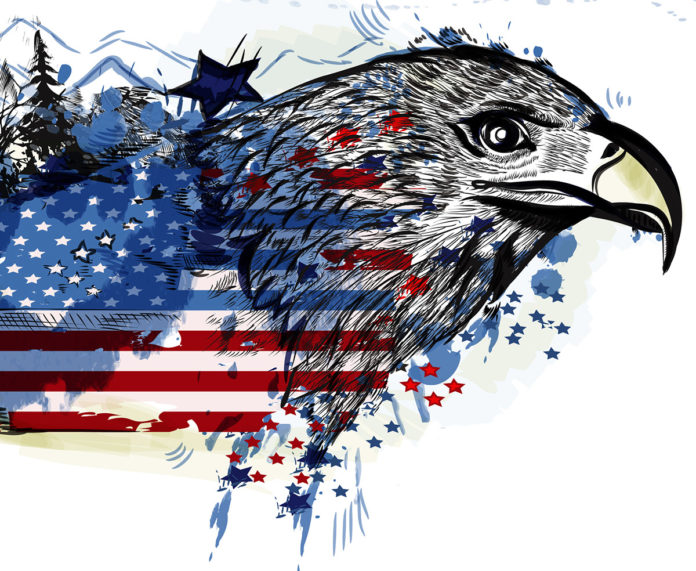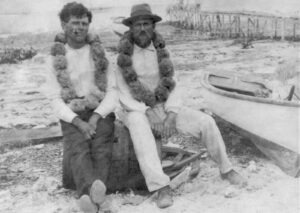The United States is just as divided today as it was in the years leading up to the Civil War. At least that’s what we keep hearing, as divisive issues like immigration, abortion, equality, LGBTQ rights and gun control dominate our daily lives. Many of today’s impassioned debates echo the themes leading up to the Civil War, which include growing calls for widespread sectionalism over the powers of our national government. So how similar is our culture to the climate of the 1850s? To compare, we dedicated this Top 10 to some of the major events leading up to 1861 and the First Battle of Bull Run.
10. 1851: The Treaty of Traverse des Sioux is signed, as the Sioux Indians give up their lands in Iowa and Minnesota to the U.S. government.
Today: A conservative U.S. Supreme Court shifts the powers to the state for prosecution of non-native Americans who commit crimes against Native American victims in tribal territories. And while some justices argued this would better protect Native Americans, many argue this is another step in discrediting tribes in a contemporary age.
9. 1852: “Uncle Tom’s Cabin” is published and is later credited for laying the groundwork for the American Civil War. Today, Harriet Beecher Stowe’s novel is considered one of the celebrated works in American literature, as it opened the eyes and hearts of many Americans considering the immortality of slavery, along with a growing international audience. (It was the first American novel translated into Chinese).
Today: Harper Lee’s “To Kill a Mockingbird,” long compared to “Uncle Tom’s Cabin” for its impact on issues surrounding racial inequality in America, has been banned in many schools around the nation.
8. 1853: Mexico gives land to what is now Arizona and New Mexico along the nation’s southern border for $15 million.
Today: Over 170 years later and the land separating the U.S. and Mexico continues to present one of the most contentious debates around immigration policy in America.
7. 1854: The Kansas-Nebraska Act separates Kansas into two territories so citizens could decide for themselves to be anti or pro-slavery. The area becomes known as “Bleeding Kansas” due to violence between opposing sides.
Today: State Republicans adopted measures to allow Texans to vote on whether the state should secede from the U.S. The party also approved a resolution declaring that sitting U.S. President Biden was not legitimately elected. It also opposes homosexuality as “an abnormal lifestyle choice” and supports a total ban on all abortions in the state.
6. 1856: Sen. Charles Sumner is savagely beaten by a cane at the hands of Rep. Preston Brooks, over an anti-slavery speech Sumner gave on the Senate floor.
Today: On Jan. 6, 2021, Officer Brian Sicknick is attacked by an angry mob, some wielding the Confederate flag, as he protects the nation’s Capitol from those attempting a coup against the inauguration of U.S. President Joe Biden. Officer Sicknick would die the following day; fellow officers Jeffrey Smith and Howard Liebengood committed suicide several days after the attempted coup.
5. 1857: The Supreme Court rules that enslaved people are property and Congress has no right to deprive citizens of their property,
Today: The Supreme Court overturns the landmark case of Roe v. Wade, which legalized abortions in America for almost 50 years. Now, abortion laws and decisions will be relegated to the states.
4. 1859: Abolitionist John Brown leads a raid at Harper’s Ferry in an attempt to seize a federal arsenal. He is captured and found guilty of treason and hanged. At the time, papers did not call Brown’s attempt a “raid,” instead he is referred to as an “insurrectionist” and accused of treason.
Today: See No. 6.
3. 1860: Abraham Lincoln becomes the 16th president of the U.S. Much of Lincoln’s platform is based on antislavery initiatives, including the Emancipation Proclamation, which freed over 4 million slaves in 1863. Slavery was officially abolished in 1865 by ratification of the 13th Amendment.
Today: In 2009, almost 150 years after Lincoln was elected, Barack Obama became the 44th president of the United States and the first African-American president in the nation’s history.
2. 1857: The Panic of 1857 leads to a depression in the U.S. The financial panic is aided by the invention of the telegraph in 1844, becoming the first financial crisis to spread rapidly throughout the U.S.
Today: A turbulent and unpredictable financial climate is hastened by a global pandemic and steep recession indicators. Employment has become one of the nation’s greatest challenges, along with supply demands and rising fuel costs. Americans are immersed in the instant consumption of information through digital and social media, which provides platforms for constant discord and debates. Moreover, 24-hour cable and streaming news networks allow Americans to choose sources that adhere to their own political ideologies above journalistic integrity — creating “confirmation bias” outlets for a divided nation.
1. 1860: South Carolina secedes from the Union.
Today: See No. 7.





















